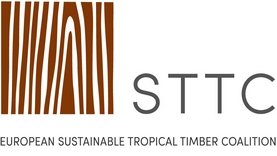SFM certification behind FLEGT licensing needs more scrutiny

Photo: Andy Roby
FLEGT licensed timber from Indonesia is more widely backed by sustainable forestry management certification than is commonly known. But more detail and analysis of the biggest scheme, the national PHPL programme, especially relative to the FSC and PEFC schemes, is needed by the international marketplace to understand its operation and criteria more clearly.
That was the message of presentations at the EU FLEGT Independent Market Monitor’s Trade Consultations in London and Nantes in March and June.
The presentation was delivered to the public and private sector audience at the events by IMM German correspondent Gunther Hentschel and Trade Analyst Rupert Oliver.
They reported that a total of 3 million ha of Indonesian forest is FSC-certified, with a further 2.8 million meeting its controlled wood standard. The national PEFC-endorsed IFCC scheme covers 3.6 million ha, while the Ministry of Industry-initiated LEI programme, based on ITTO sustainable forest management criteria, covers 2.6 million ha.
However the PHPL scheme, which is little known in the global timber trade, covers 10.9 million ha of natural forest and 5.7 million ha of plantation, with plans to raise the total to between 22 and 23 million ha. It is also obligatory under Indonesia’s SVLK timber legality assurance system and FLEGT VPA for wood exports to be either accredited under the SVLK’s own forestry legality standard or PHPL. On this basis, it was estimated, PHPL certification backed up to two thirds of FLEGT-licensed exports
But said the IMM speakers, while the PHPL scheme is comparable with FSC and PEFC in some areas, it lacks a traceability element and a cut-off point in time for certifying conversion forest.
They concluded that the PHPL needed to be better communicated and that gap analysis between it and FSC and PEFC schemes should be undertaken.
They also stated that Indonesian sustainable forestry management certification does not seem to have slowed down since FLEGT licensing was introduced in 2016. In fact the IFCC scheme has doubled in coverage in that time.



